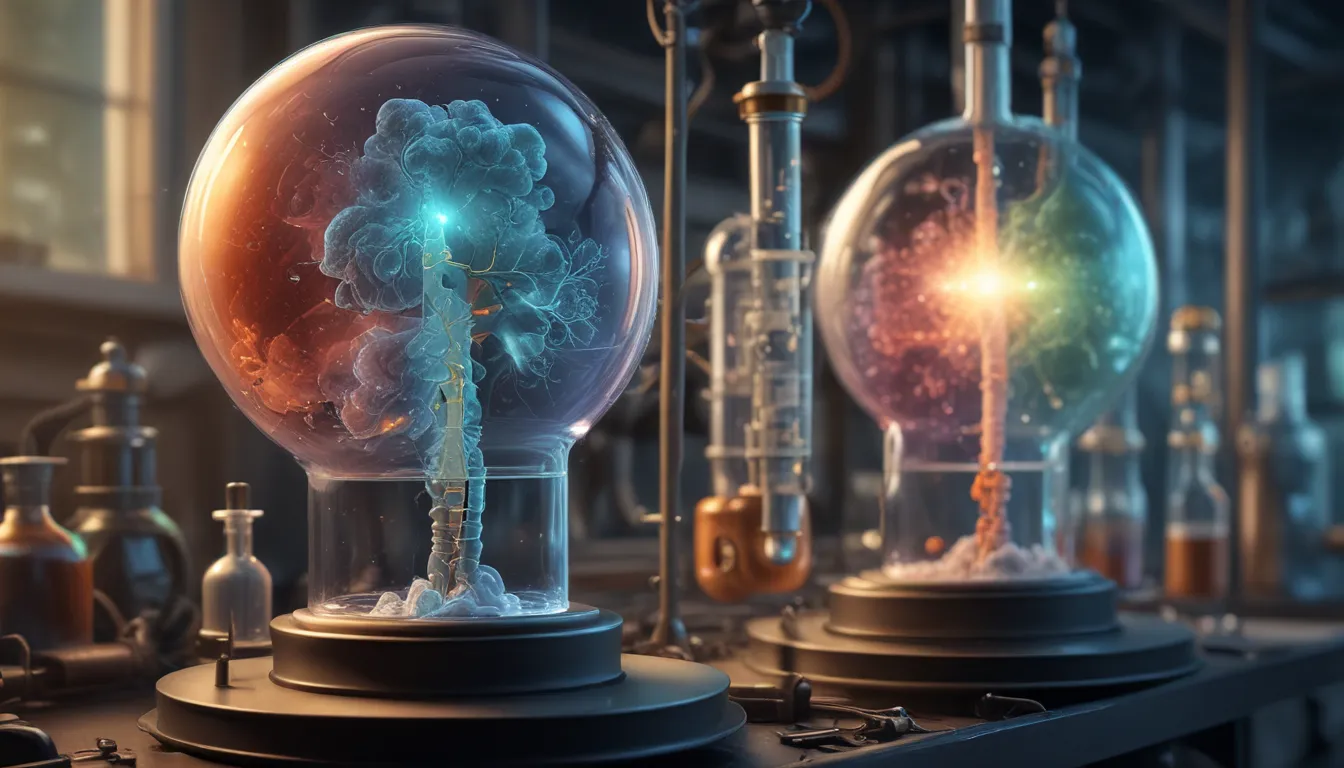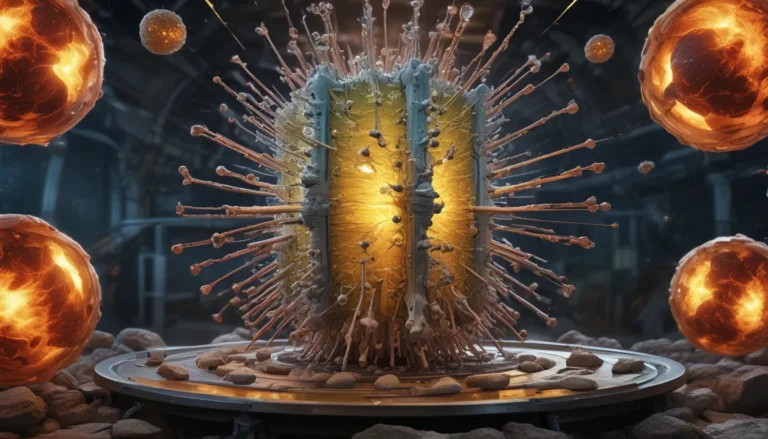A Note About Images: The images used in our articles are for illustration purposes only and may not exactly match the content. They are meant to engage readers, but the text should be relied upon for accurate information.
The kinetic theory of gases is a foundational concept in physics that sheds light on the behavior of gases at the molecular level. By delving into the movement and interactions of gas particles, this theory has revolutionized our understanding of gas behavior and has wide-ranging applications in various fields such as engineering, chemistry, and meteorology. In this article, we will uncover 18 extraordinary facts about the kinetic theory of gases that highlight its significance and the invaluable insights it offers to scientists. From elucidating the properties of gases to providing a framework for thermodynamics, the kinetic theory of gases continues to captivate physicists and shape our comprehension of the world around us. Join us on this intriguing journey as we explore the intricate world of gas molecules!
Unlocking the World of Gas Molecules
-
Gases consist of molecules in constant motion: The kinetic theory of gases posits that gases are composed of tiny particles called molecules that are in perpetual motion. These molecules travel in straight lines until they collide with other molecules or the container walls.
-
The kinetic energy of gas molecules determines their temperature: In accordance with the kinetic theory, the temperature of a gas is directly proportional to the average kinetic energy of its molecules. As the kinetic energy increases, so does the temperature of the gas.
-
Gas molecules are widely spaced: The kinetic theory postulates that gas molecules are significantly spaced apart compared to their size. This characteristic explains why gases are highly compressible and have the ability to expand to fill any container.
Shedding Light on Gas Behavior
-
Gas pressure is caused by molecular collisions: The pressure exerted by a gas arises from the constant collisions between gas molecules and the container walls. The frequency and intensity of these collisions dictate the pressure of the gas.
-
Gas molecules have random velocities: As per the kinetic theory, gas molecules move with random velocities. The distribution of these velocities follows a probability distribution known as the Maxwell-Boltzmann distribution.
-
Temperature is a measure of molecular motion: The temperature of a gas is a reflection of the average kinetic energy and consequently, the average speed of its molecules. Higher temperatures correspond to elevated molecular speeds.
Applications of the Kinetic Theory
-
Gases mix readily due to molecular motion: The continuous movement and high speeds of gas molecules facilitate their easy mixing with other gases. This property is pivotal in various applications such as atmospheric processes and industrial settings.
-
The kinetic theory accounts for gas diffusion: Gas diffusion, the process in which gas molecules mix and spread out through random motion, is elucidated by the kinetic theory. It explains how gas molecules move from regions of high concentration to regions of low concentration.
-
The kinetic theory provides a basis for the ideal gas law: Serving as the cornerstone for the ideal gas law, the kinetic theory establishes a relationship between pressure, temperature, volume, and the number of gas molecules. This law is indispensable for diverse calculations in chemistry and physics.
Delving Deeper into Gas Dynamics
-
Gas pressure decreases at higher altitudes: With an increase in altitude, there are fewer gas molecules above, leading to a decrease in pressure. The kinetic theory clarifies this phenomenon by attributing it to the reduced number of molecular collisions at higher altitudes.
-
The kinetic theory can be applied to real gases: Despite assuming idealized conditions, the kinetic theory can reasonably describe the behavior of real gases under typical circumstances. However, adjustments are needed to consider intermolecular forces and deviations from ideal behavior.
-
The kinetic theory explains the relationship between temperature and volume: Charles’s Law, explained by the kinetic theory, establishes that, at constant pressure, the volume of a gas is directly proportional to its temperature. This connection arises from the heightened molecular motion and collisions at elevated temperatures.
Unveiling Gas Characteristics
-
The kinetic theory accounts for the concept of gas density: Gas density, denoting the mass of gas molecules per unit volume, is expounded by the kinetic theory. It clarifies that gas density diminishes with decreasing pressure or increasing temperature due to augmented molecular motion and expanded molecular spacing.
-
The kinetic theory helps explain gas behavior during diffusion and effusion: By considering molecular motion and collisions, the kinetic theory offers a framework to comprehend the processes of diffusion and effusion, where gas molecules mix spontaneously and escape through small openings, respectively.
-
The kinetic theory elucidates the relationship between gas temperature and pressure: As per Gay-Lussac’s Law, the kinetic theory asserts that, at constant volume, the pressure of a gas is directly proportional to its temperature. This linkage stems from the amplified molecular collisions and ensuing force exerted on the container walls.
The Wide Applications of the Kinetic Theory
The kinetic theory of gases finds extensive applications in physics, chemistry, and engineering. By providing a fundamental insight into gas behavior, this theory enables scientists and engineers to predict and explicate gas-related phenomena across various domains.
Conclusion
In conclusion, the kinetic theory of gases is a seminal concept in physics that unveils the behavior and properties of gases at a microscopic level. By delving into the motion of gas molecules and the correlations between temperature, pressure, and volume, this theory enables us to elucidate a myriad of phenomena such as diffusion, the ideal gas law, and temperature concepts. Moreover, with practical implications spanning thermodynamics, atmospheric science, and engineering, understanding the kinetic theory of gases is imperative for comprehending gas dynamics in diverse scenarios.
Experience the wonder of gases in a whole new light by exploring captivating articles on the ideal gas law and the influence of pressure and temperature on gas behavior. For a journey through the annals of science, delve into the remarkable life and work of Ludwig Boltzmann, whose revolutionary insights transformed our understanding of gas dynamics and laid the groundwork for modern physics.
FAQs
- What is the kinetic theory of gases?
-
The kinetic theory of gases elucidates the behavior and properties of gases by positing that gases comprise minute particles in ceaseless random motion.
-
What are the assumptions of the kinetic theory of gases?
-
The assumptions of the kinetic theory of gases include the concept that gas molecules are in continuous random motion, possess negligible volume, do not interact with one another, and engage in perfectly elastic collisions.
-
How does the kinetic theory of gases explicate pressure?
-
According to the kinetic theory of gases, pressure arises from the continuous collisions of gas molecules with the container walls. The frequency and intensity of these collisions determine the pressure.
-
What is the root mean square (rms) speed of gas molecules?
-
The rms speed serves as a measure of the average speed of gas molecules in a sample and is calculated as the square root of the average of the squared speeds of individual gas molecules.
-
Why does temperature impact the kinetic energy of gas molecules?
-
Temperature is directly proportional to the average kinetic energy of gas molecules. With an increase in temperature, the average kinetic energy and thus the speed of the gas molecules also escalate.
-
Can the kinetic theory of gases account for deviations from ideal behavior?
- While the kinetic theory of gases offers a good approximation for ideal gases, it does not encompass all real gas behaviors. At high pressures or low temperatures, real gases may deviate from ideal behavior due to intermolecular forces and the volume occupied by molecules.
Engage with Reliable Knowledge
Our commitment to delivering trustworthy and engaging content underscores our core mission. Each factual nugget on our platform is contributed by real users, fostering a rich tapestry of diverse insights and information. Upholding the highest standards of accuracy and reliability, our dedicated editors meticulously review each submission, ensuring that the facts shared are not only enthralling but also credible. Foster trust in our unwavering dedication to quality and authenticity as you embark on an enriching learning journey with us.






